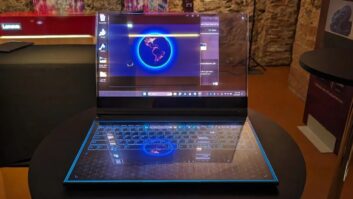CE Week New York — Vivek Khemka, Dish product management senior VP, used a keynote address at the S3 2nd Screen Summit during CE Week, here, Thursday to reveal that the satellite-TV provider is opening its second-screen application programming interface (API) to “trusted third-party partners.”
The goal, he said, is to generate a variety of aggregated second-screen apps that Dish subscribers can use to build a richer, more enjoyable user experience across all of the content options available to them on the pay-TV platform.
Khemka pointed out that Dish is one of the only pay-TV service operators offering a dedicated second-screen app with full sync control of live TV and DVR functions, on-demand search, and social media (Twitter and Facebook) integration.
“From a second-screen perspective — if you look at the remote control, it hasn’t changed much in the last 15 to 20 years. It’s an important part of the user experience as a touch point for our interface,” Khemka said.
Dish sees the emerging second-screen trend as an opportunity “to change how people interact with their TV,” he said.
“What we have seen with our second-screen app usage is that a lot of people use it to discover new content — whether on demand or live TV based off of what’s hot or social recommendations from friends. They are using the second screen to discover a lot more shows across all of the content they are subscribed to.”
Khemka said the second-screen experience is more rewarding “when the same app works irrespective of what channel you are watching.”
“We see some fragmentation in the market where if you are watching a certain show, you might get a second-screen app on that show, but the minute you change channels that app becomes useless,” Khemka said. “Also, these apps have content sources, so if you are watching an NBC show, for example, you get some content with it that may be behind the scenes content, or social-media Twitter content, but if you tune to an ABC show, you may be getting something completely different.”
“What we would like to see happen in the second-screen space is some sort of standardization across content, across what’s available for second screen content, how these second-screen apps access content and we would like to see more aggregated second-screen apps versus discrete second-screen apps,” Khemka revealed.
Opening the Dish API should help to jump-start some of that standardization as well as produce apps that enable access to second-screen apps users like best — “whether it be the ZeeBox app or the Dish Explorer app,” he said.
He explained these “trusted partners” will have access to the same second-screen APIs Dish uses for its Dish Explorer feature.
Dish Explorer is a second-screen application that essentially replaces a standard remote control with a social-media-enabled, content-rich touchscreen. It features full Twitter and Facebook integration, with sidebars to outline what friends and community are watching. The app also ranks current shows based on their popularity on Twitter and organizes programs by category, genre, etc.
At this stage, Khemka said, it’s too early to determine what Dish’s “trusted partners” might develop.
“I could see something like a best second-screen sports app, or if you are, say, a Broncos fan, an app that automatically sets the Dish DVR to record games or Broncos news reports.
“I think it will spawn innovation while opening the platform for TV apps on the second screen that developers have not had access to today,” he said.
According to Khemka, Dish sees the second screen as “a companion screen while you’re watching television. It’s not a replacement for the main TV in your house. You are watching TV on your Hopper, watching content on your big screen, and then you are using the second screen as either a device to engage, control or discover.”
The second screen could be a PC, a mobile phone or tablet, although Dish’s second screen today is an iOS-based tablet.
“Our second-screen app today is tablet focused, but using our API’s people could write PC, mobile phone or tablet apps,” Khemka said.
Although Dish also offers apps for tablets to view content away from the big screen using its Slingbox technology, Khemka said Dish does not consider that part of the second screen experience.
The Slingbox application linking the Hopper to a tablet “is more of a replacement of the first screen than a second screen,” he said. “That is content consumption, where you are choosing to view content on a smaller screen. That’s why Dish Explorer is a separate app from what we call Dish Anywhere,” Khemka explained.
Khemka said he doesn’t see Dish’s Hopper supplanting smart TVs in the experience, adding that he sees scenarios developing where the smart TV, the Hopper and the second screen could all work in consort.
“Smart TVs offer a lot more apps than the Hopper offers today, and it always will. The web-kit apps we build on the Hopper are pretty much apps we dedicate to enhancing a TV experience,” he said. “We are not building apps like ‘Angry Birds,’ because we think people have smart TVs and smart boxes people are building — like Roku — that access that game or similar content. Our interest is in building apps like ‘Game Finder’ that help you search for sports on TV and then give you live scores of every game. Smart TVs will always have more long-tail use cases.”
He added that if a “trusted partner developer” wanted to, it could develop a Dish second-screen app for a smart TV, too.













